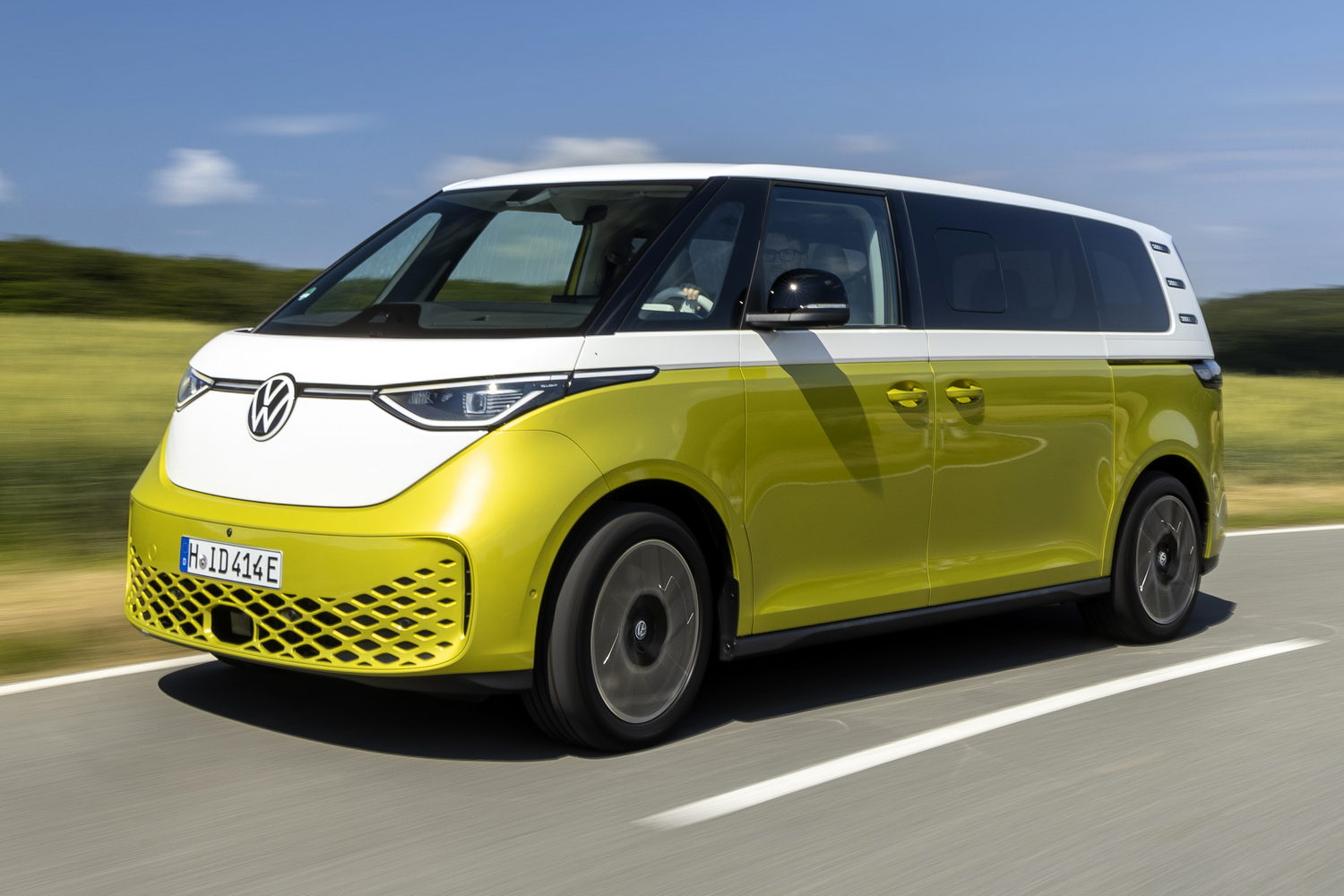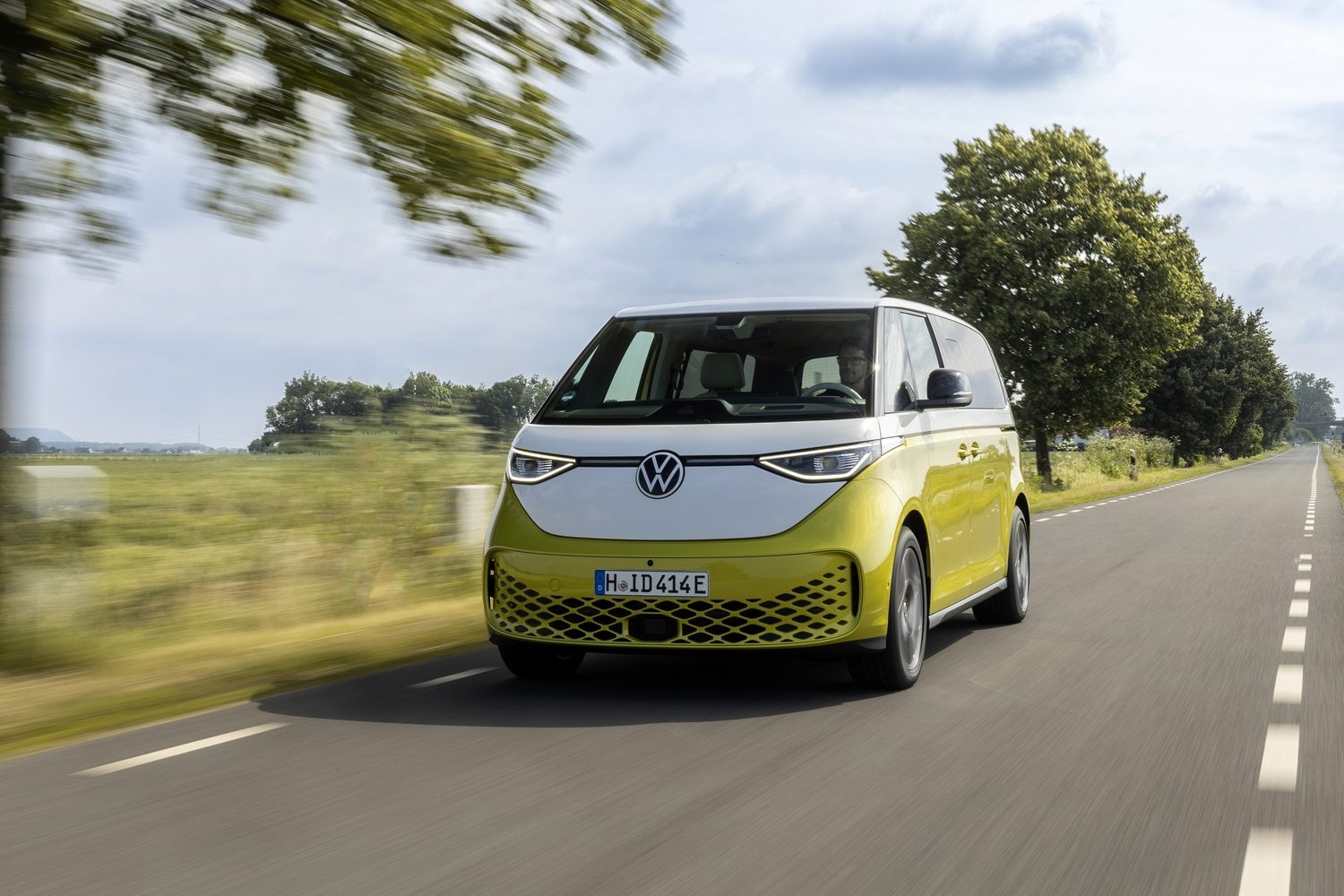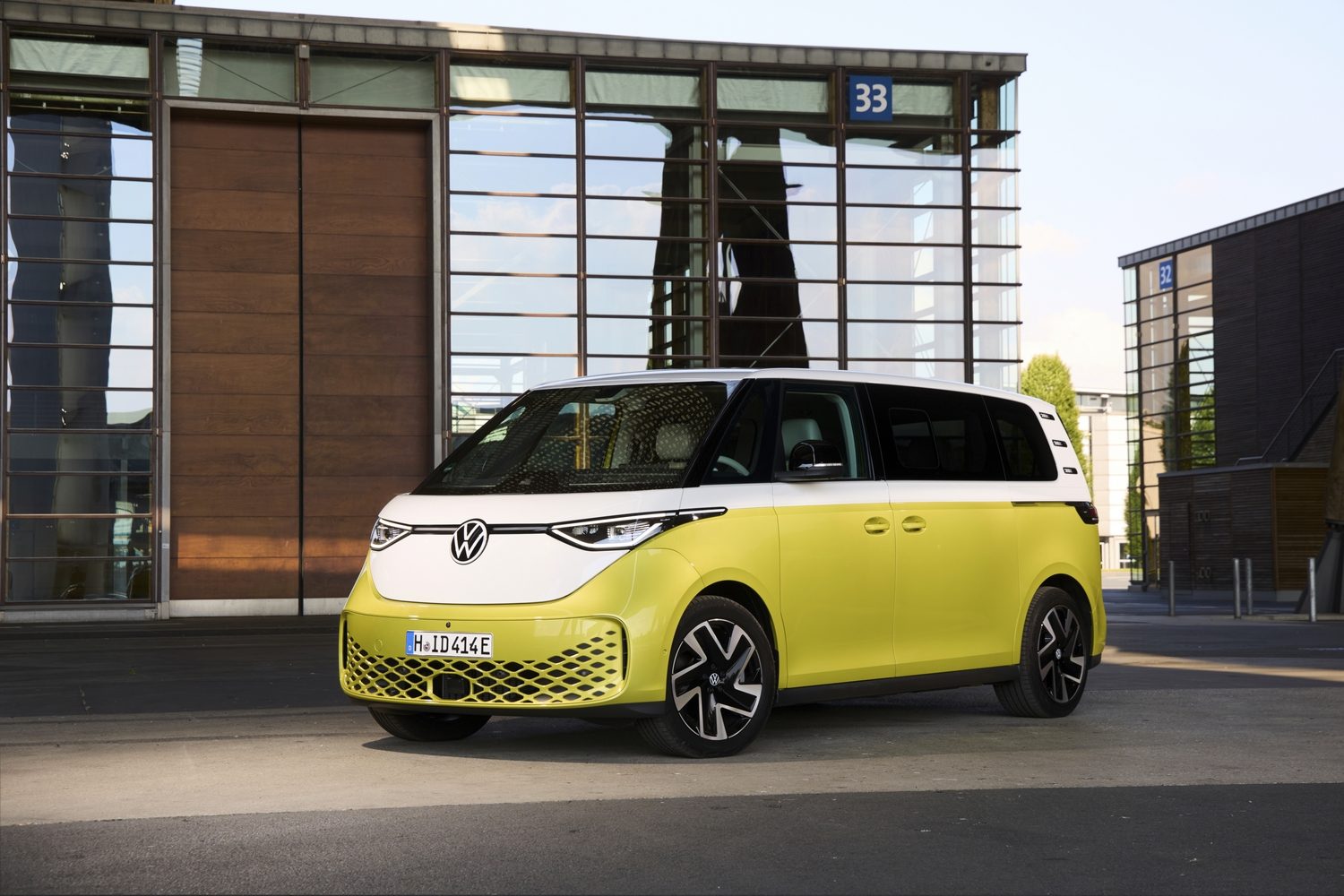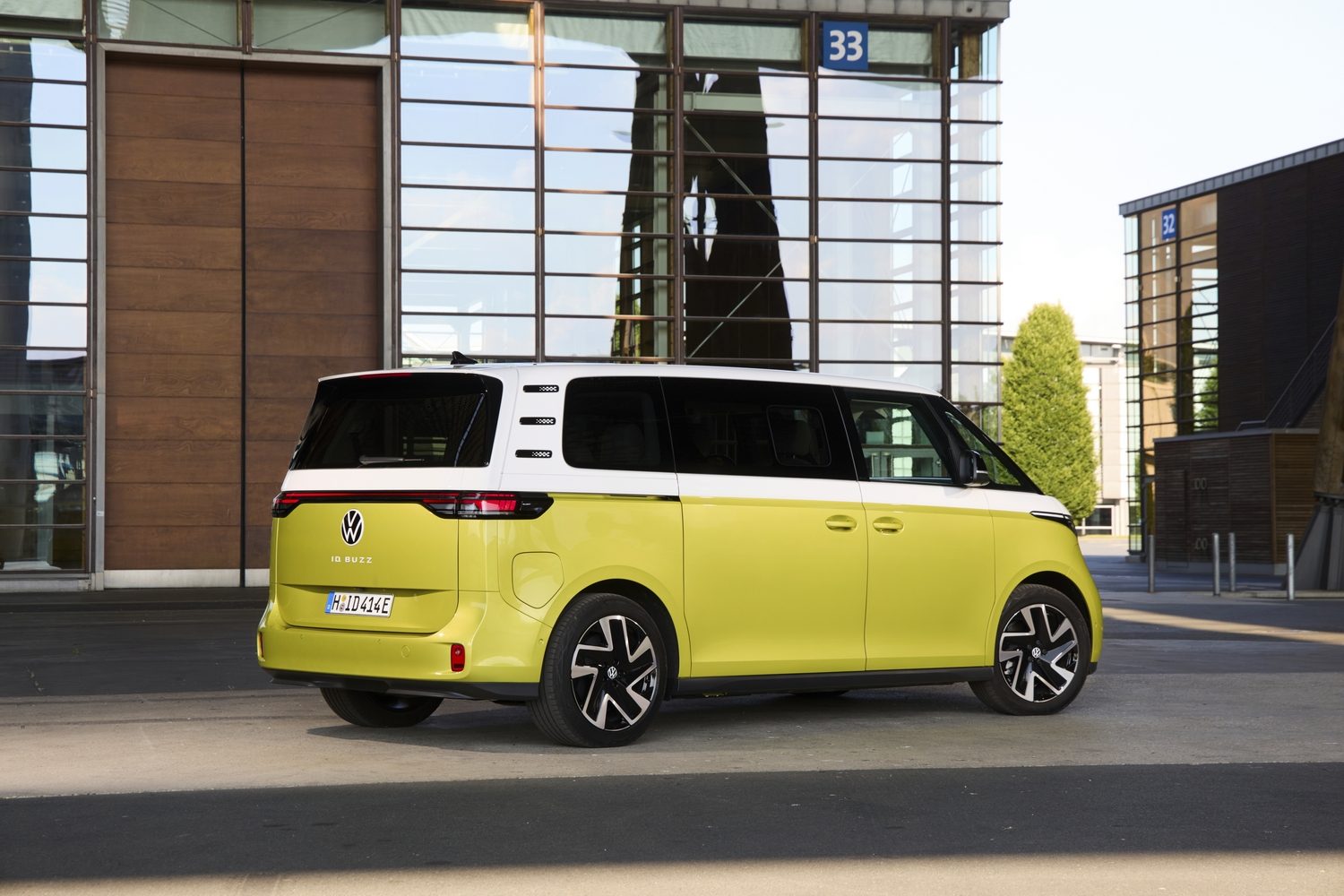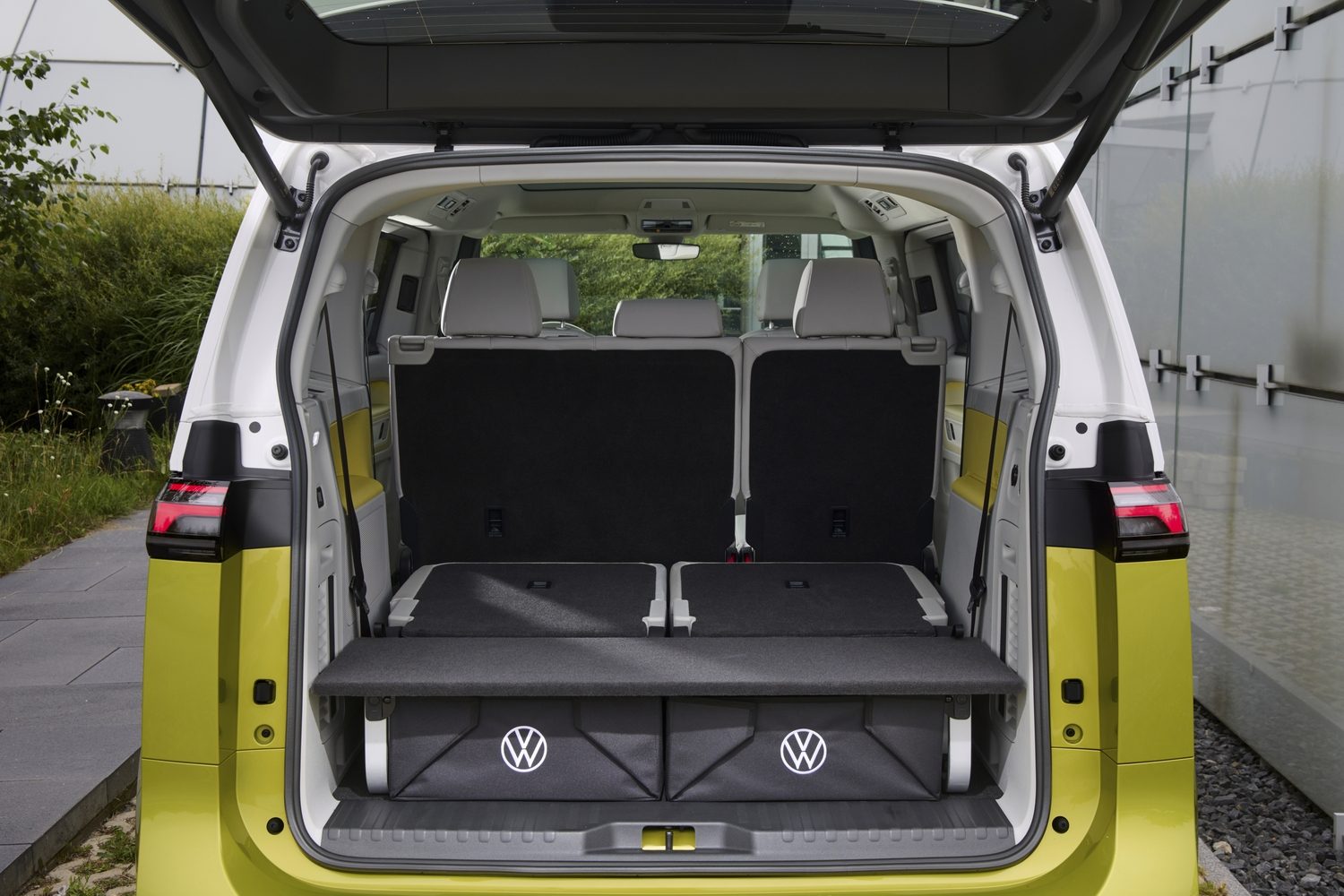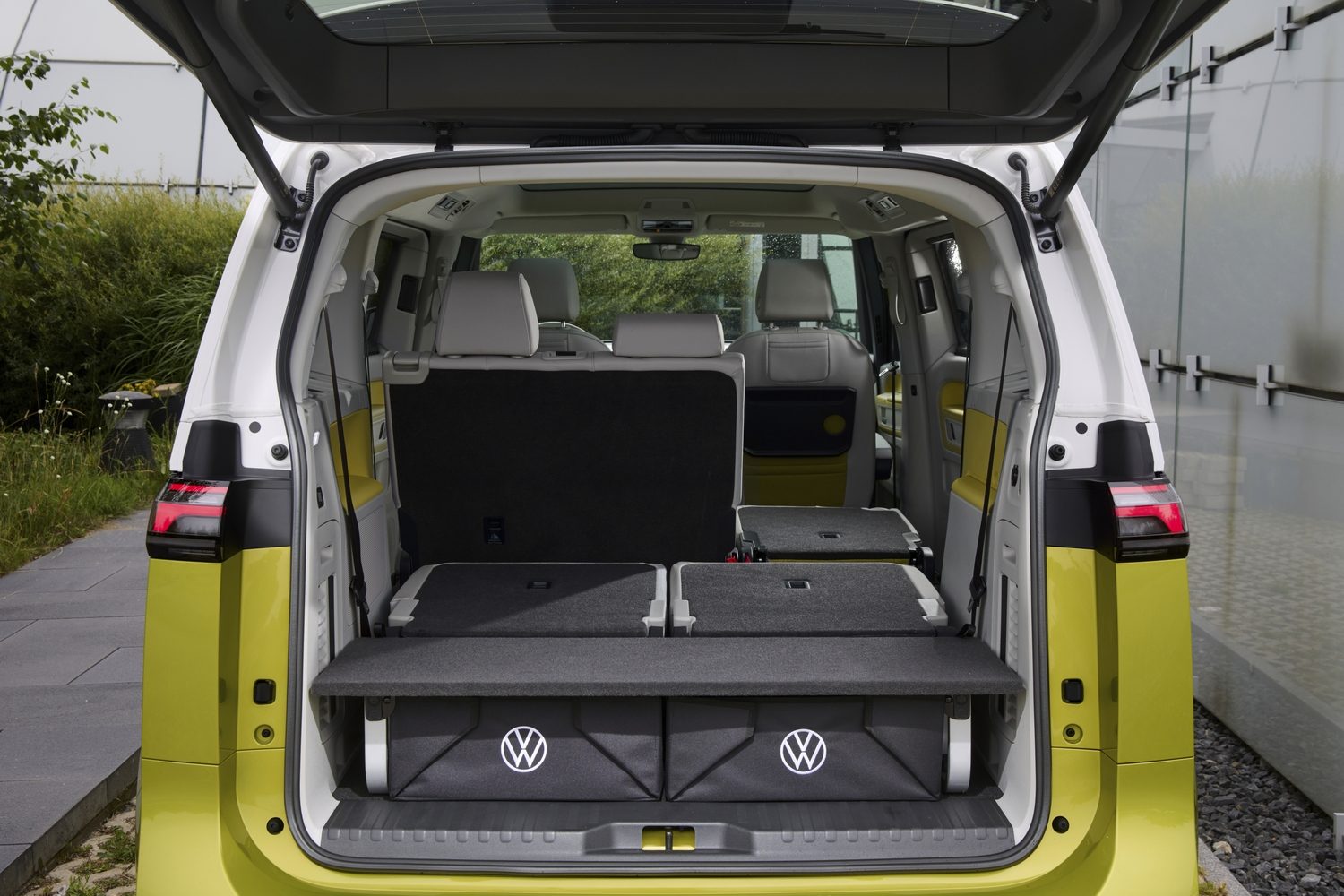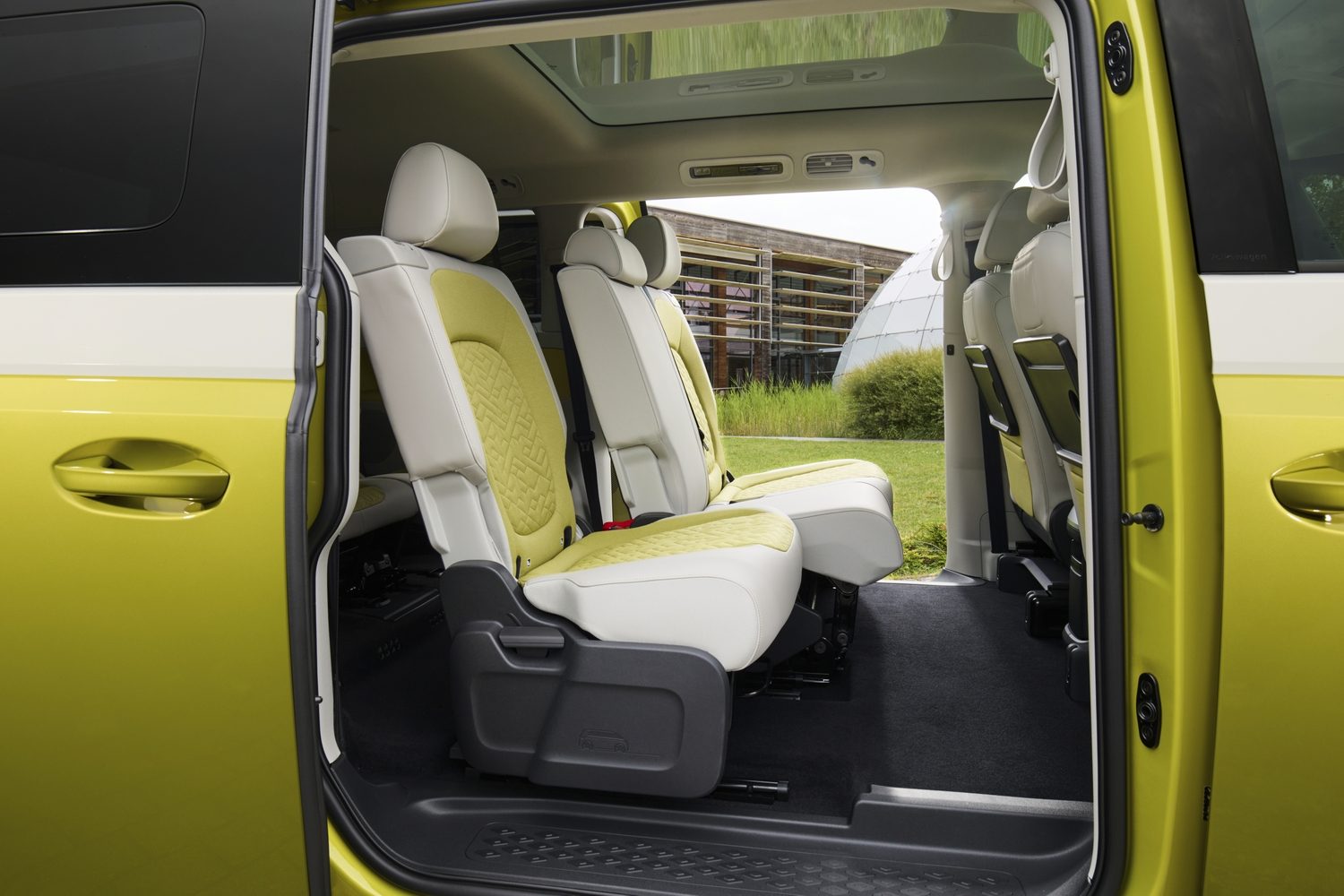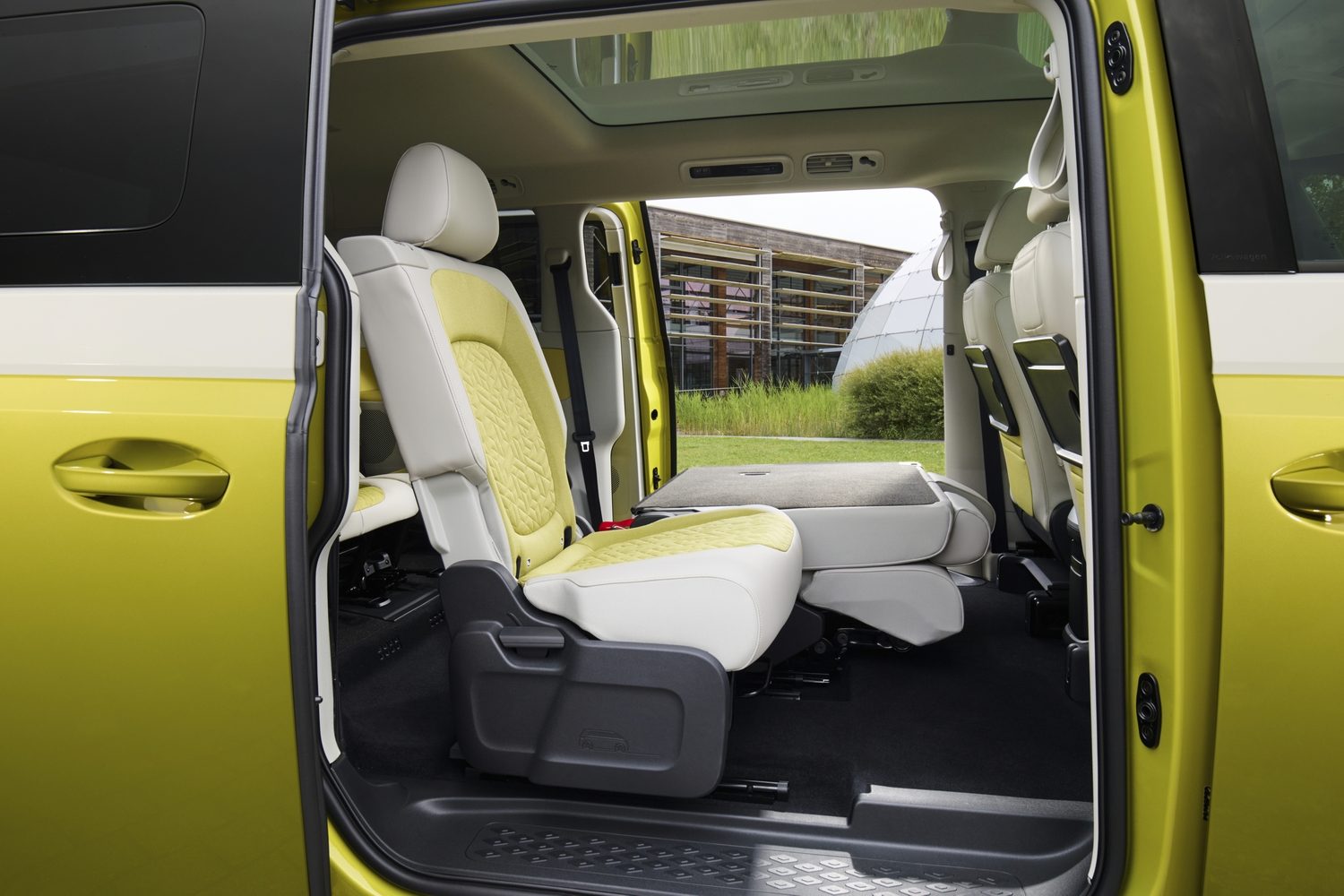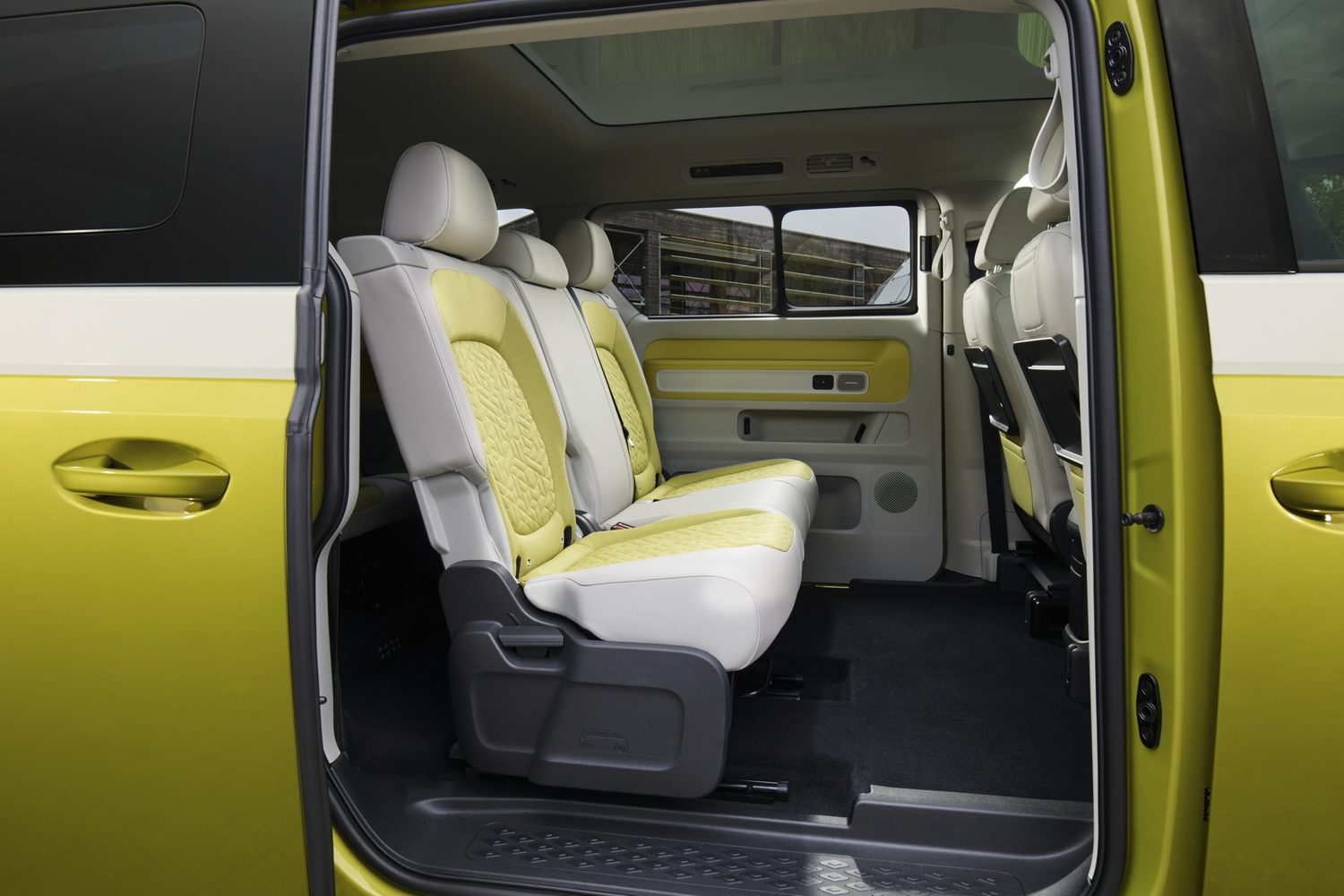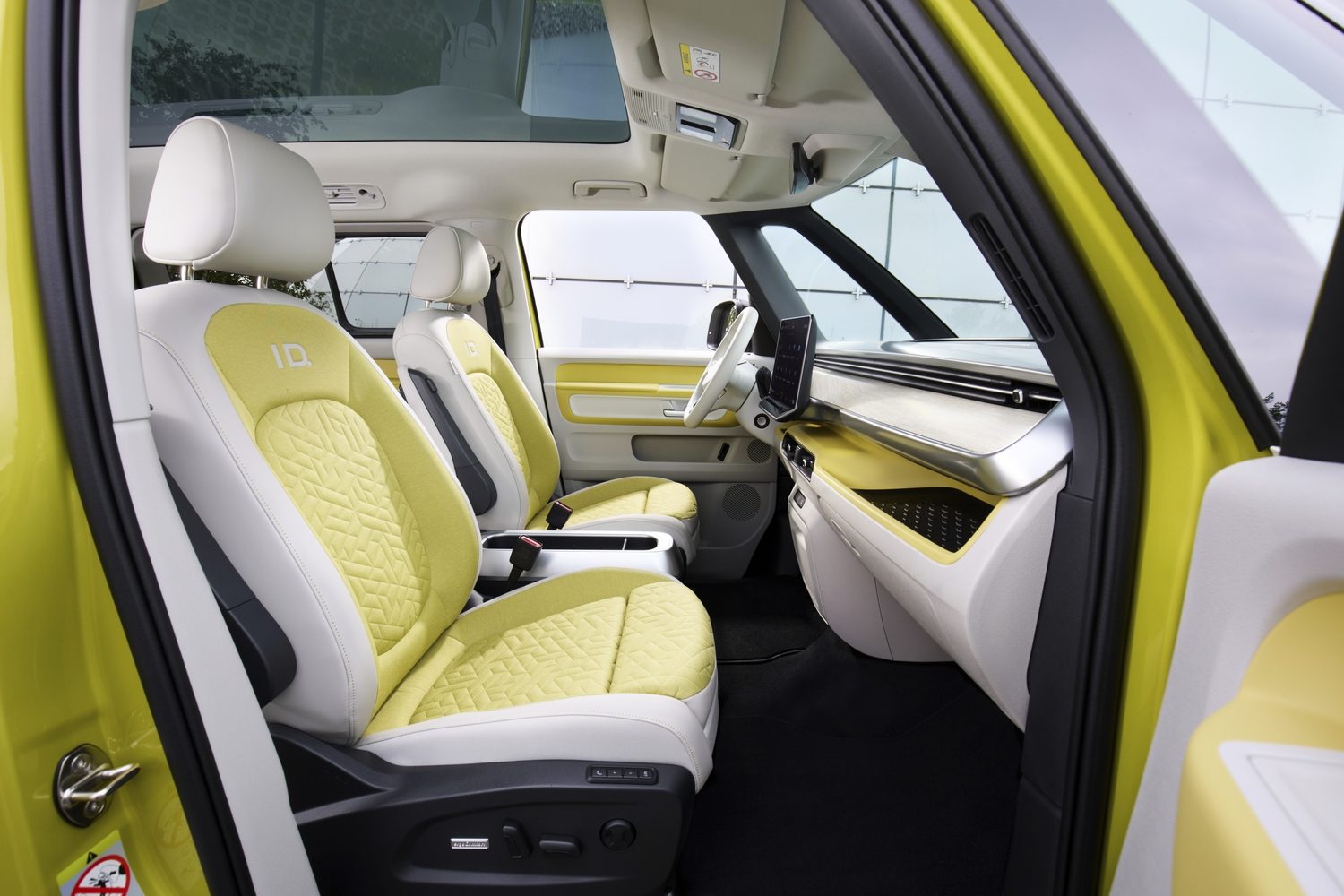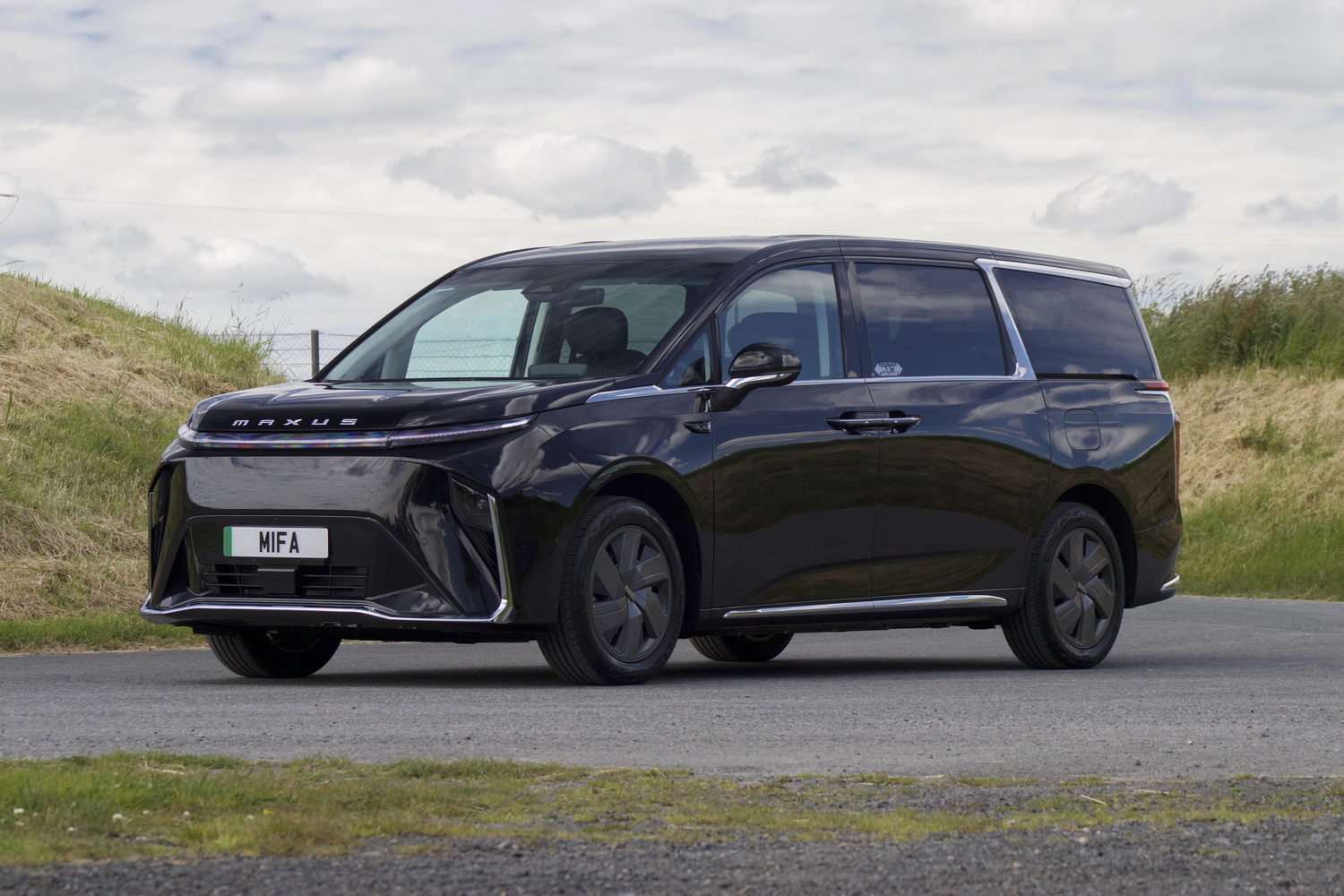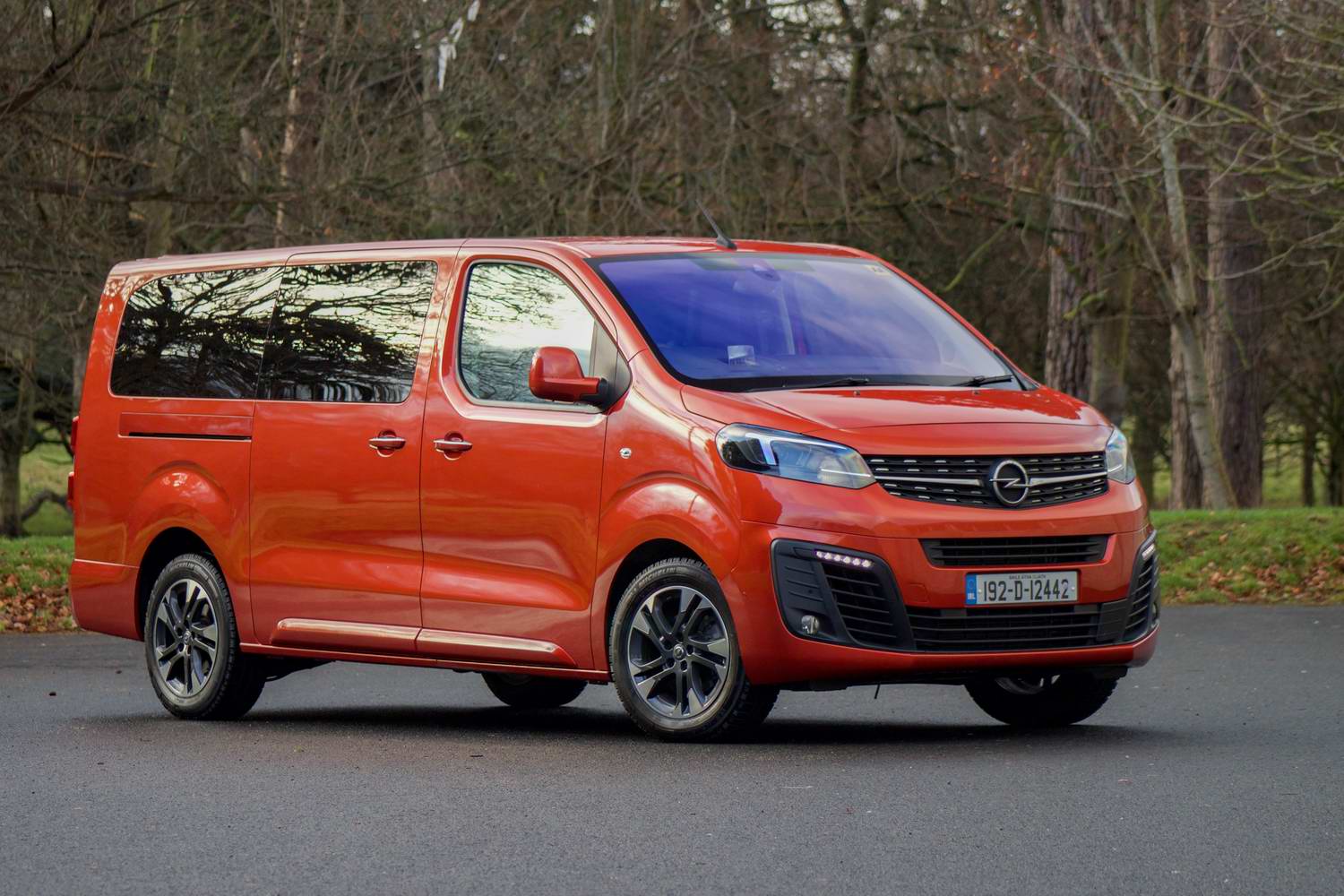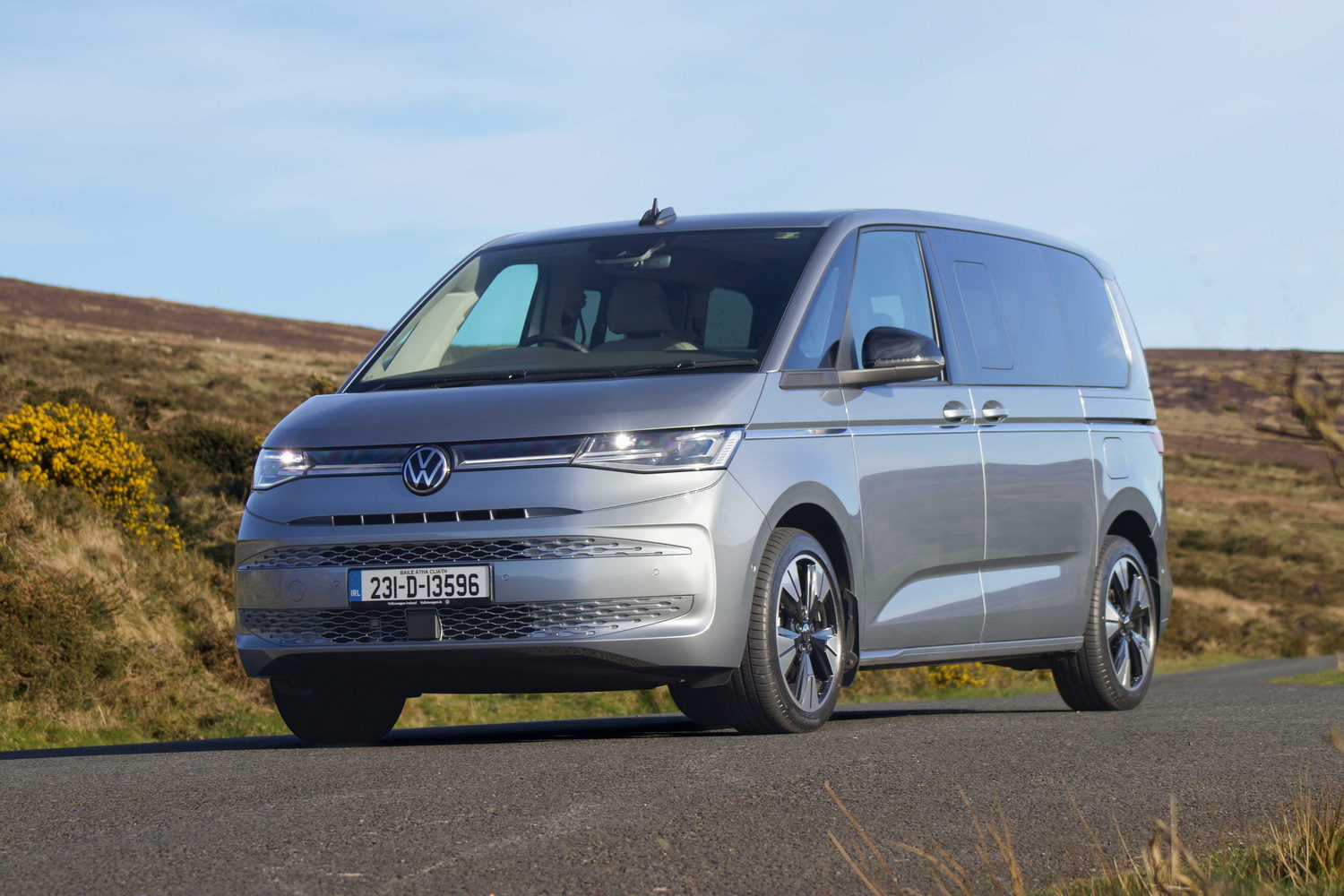No other people carrier has turned as many heads since its introduction as the Volkswagen ID. Buzz. However, despite its retro-cool image, it hasn’t been the most practical of people movers, at least with regard to the number of passengers it can carry.
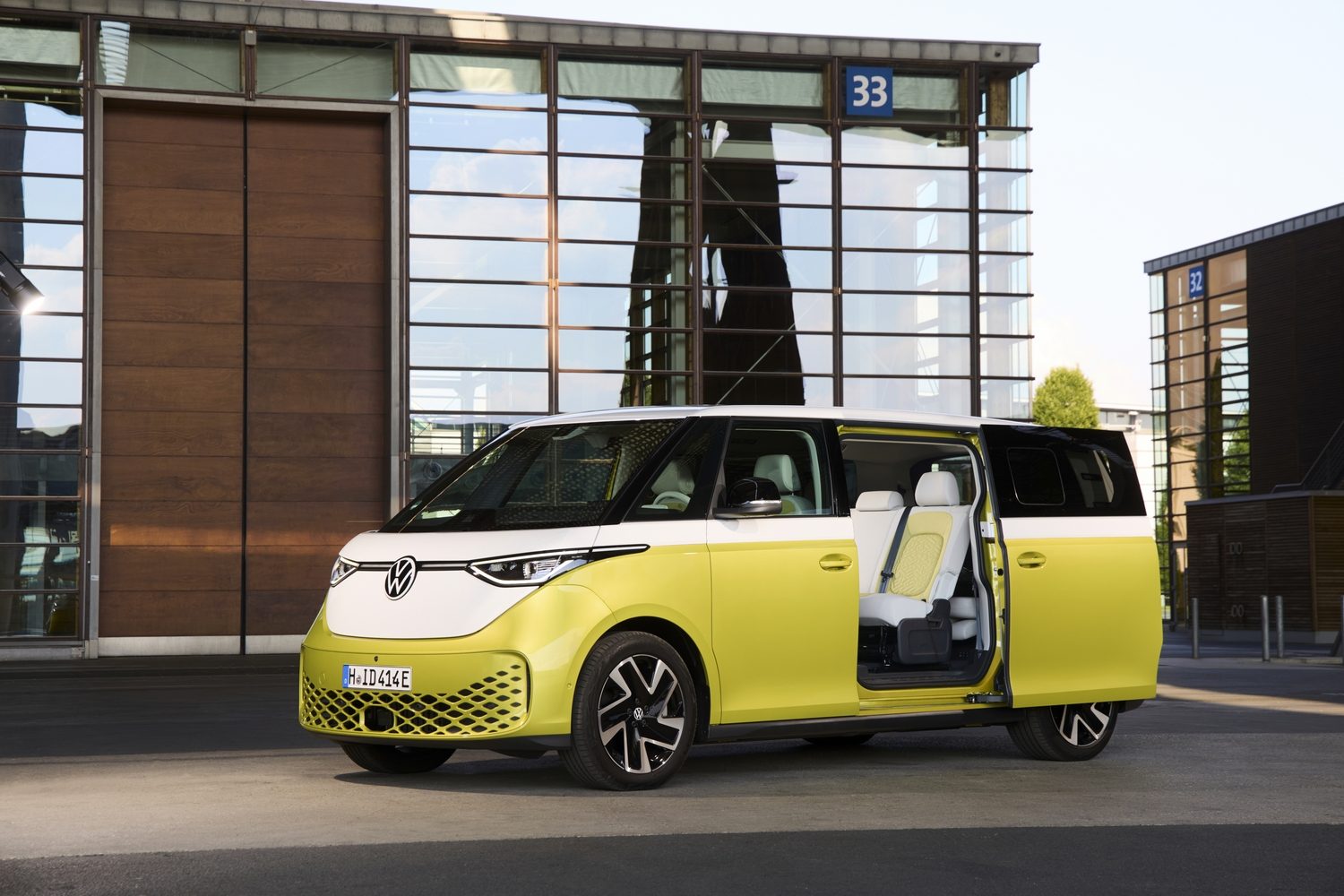
Until now, the ID. Buzz has only been a five-seater, but that’s about to change with the addition of a long-wheelbase variant that adds an all-important third row of seats. Furthermore, Volkswagen is using the extra length of this variant to fit a larger-capacity battery, adding more range and a higher peak charging rate.
A look inside the Volkswagen ID. Buzz LWB
There are some minor changes to the interior of the ID. Buzz that are all part of a 2025 model year update, so these will apply to the standard-wheelbase car, too. Of most relevance to owners will be the introduction of a larger (12.9-inch) touchscreen display that is supported by improvements to the native infotainment system. Besides functional improvements including the illumination of the touch bar along the base of the screen for cabin temperature and volume controls, there is a better home screen layout that includes keeping frequently used functions visible at all times.
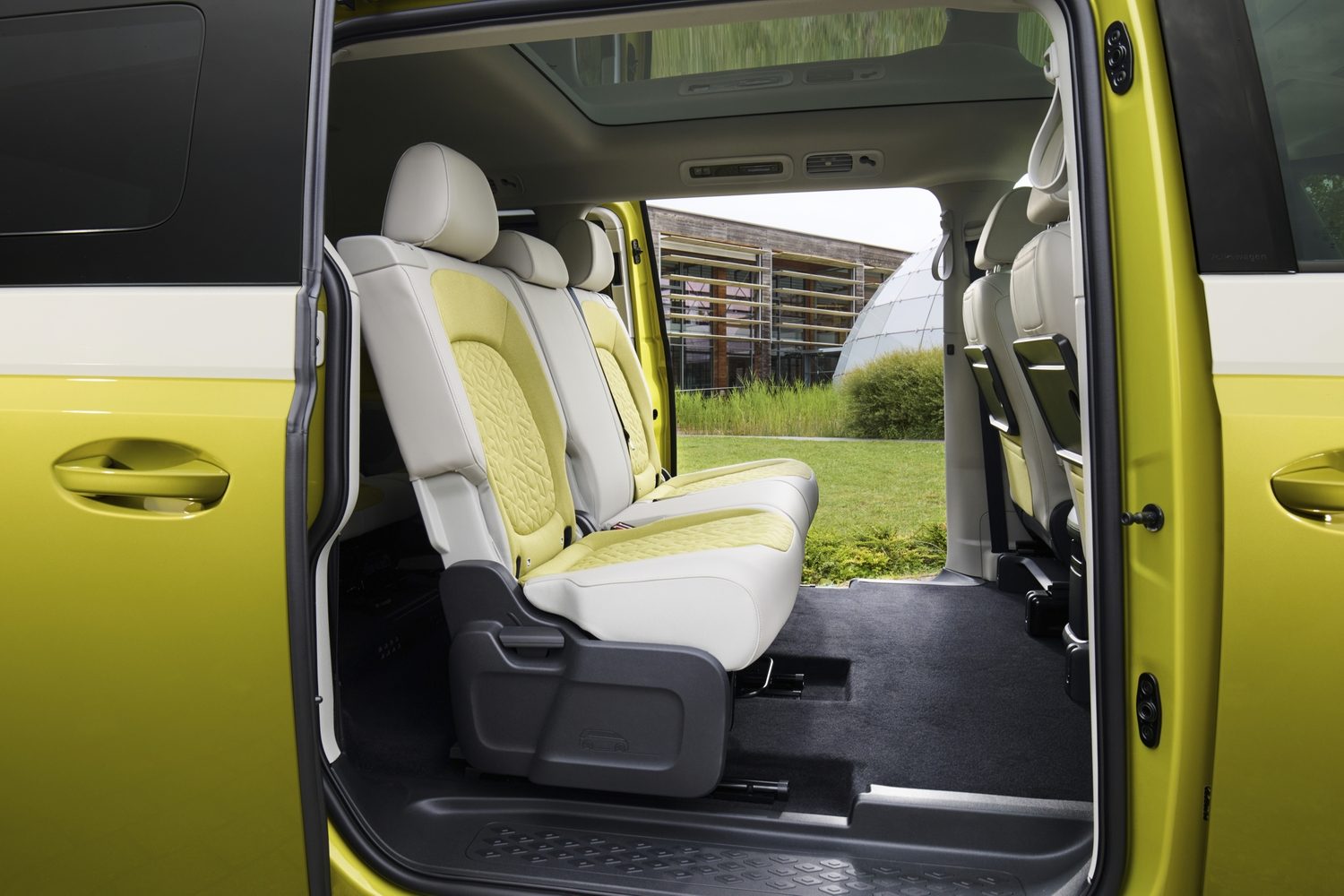
The driver’s and front passenger’s seats now include adjustable armrests on the inner sides and top-spec models feature 12-way electrically adjustable seats with massage and memory functions. In front of the driver is a 5.3-inch display for the instruments that is clear and easy to read at a glance. Along the base of the windscreen there is a thin LED strip performing several functions. When the vehicle is charging, the battery’s charge level is indicated visually by how far along the strip is illuminated. When using the navigation, the next turn is shown by a sweeping motion along the light bar, either to the left or right.
There is an open and airy feeling inside the ID. Buzz with a small shelf area on the dashboard in front of the passenger and a larger central storage unit that contains cupholders. Two additional cupholders can be folded out from the centre of the dashboard at a lower level. When these aren’t in use, there’s plenty of free space for fitting in an extra soft bag or two, as there is no traditional transmission tunnel, and the drive selector is on the steering column.
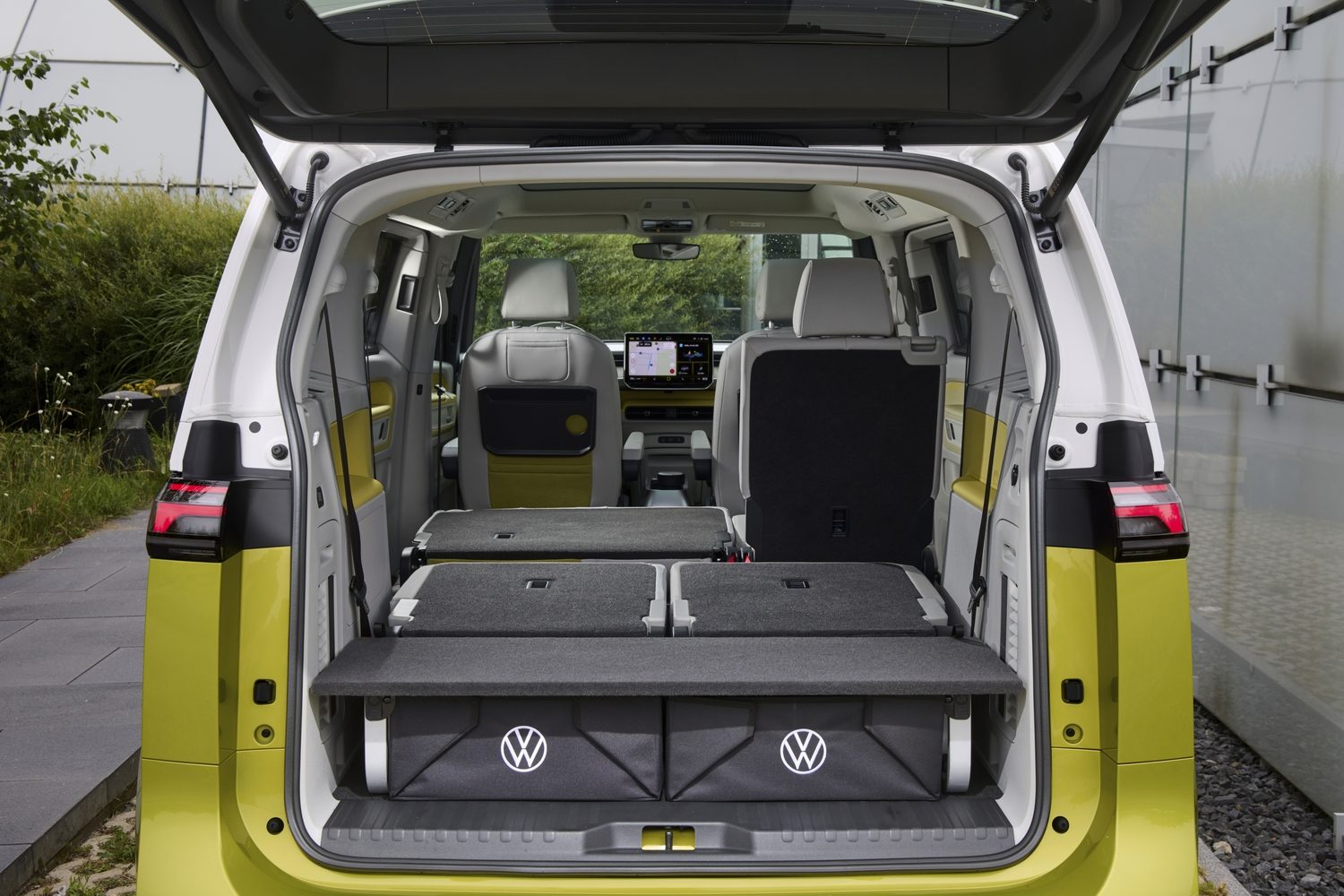
By adding a long-wheelbase option, Volkswagen is able to offer more seating arrangements. The most important and anticipated of these is a third row that can comfortably seat two adults. In the seven-seat setup, the middle row is a bench seat with a 60:40 split, and it can slide forward by up to 200mm to create more room for those in the rearmost seats. Two other features that have been introduced to the ID. Buzz are electric windows for the rear doors and a panoramic glass roof. The latter is the largest fitted to a Volkswagen production model to date, measuring 1.5 square metres.
How big is the Volkswagen ID. Buzz LWB?
The overall length of the long-wheelbase ID. Buzz is 4,962mm, which is one millimetre longer than the Volkswagen ID.7. For reference, the standard ID. Buzz measures in at 4,712mm long. Volkswagen adds most of the additional length to the wheelbase (that space between the front and rear wheels), which grows from 2,989mm to 3,239mm. There is a visible difference when you see both versions parked side by side, though the long-wheelbase model doesn’t look out of proportion.
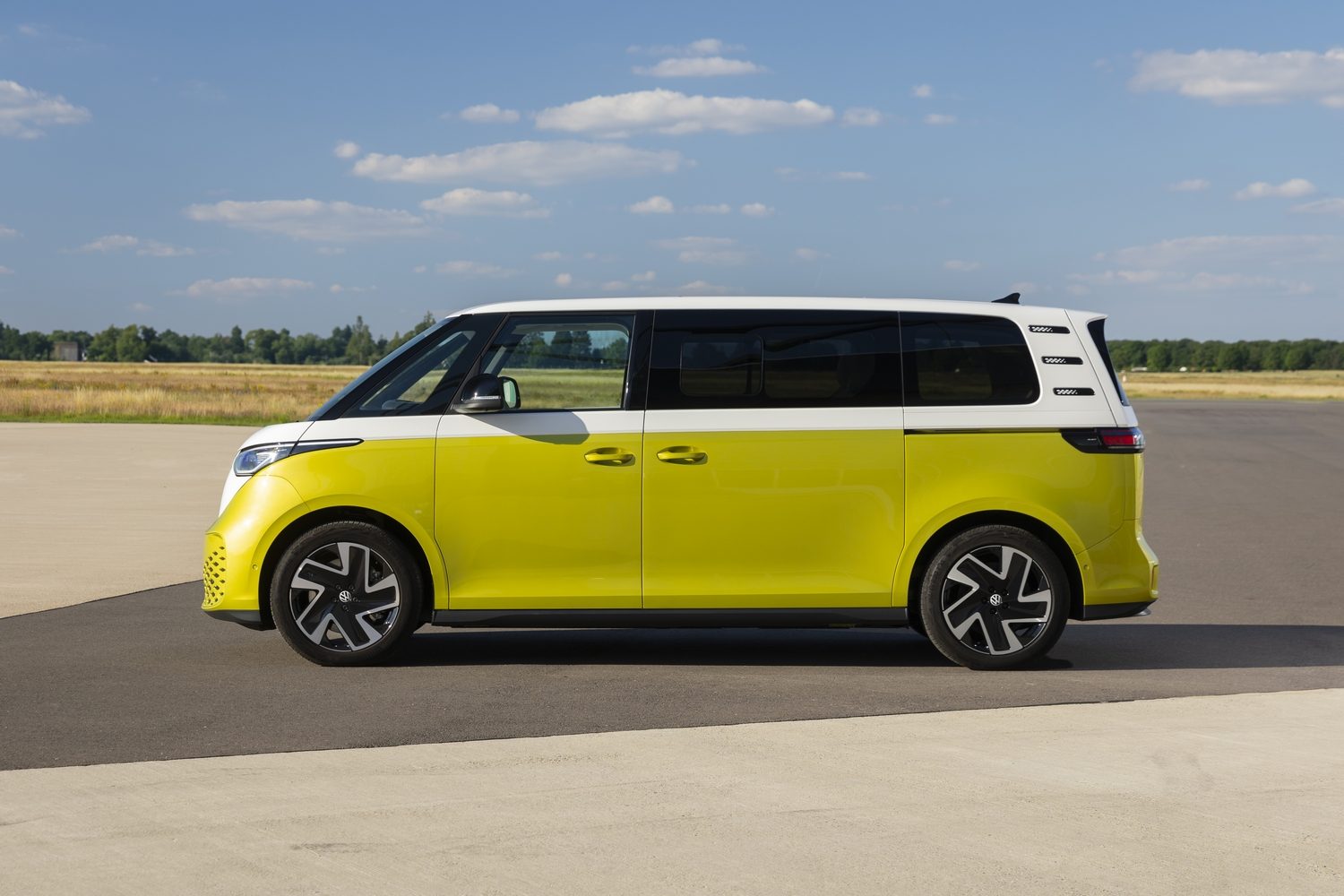
The extra 250mm is shared between longer sliding rear doors (extended by 192mm) and the area beyond the rear wheels, which extends by 58mm. Notably, the ID. Buzz is no wider with the longer wheelbase, and nor does the height increase, meaning that it can still enter most multi-storey car parks and fit into the average parking space with relative ease.
What’s the electric range of the Volkswagen ID. Buzz LWB?
The Volkswagen ID. Buzz LWB uses an 86kWh battery that has a WLTP driving range of between 453- and 487 kilometres. That is slightly more than the standard-wheelbase ID. Buzz’s 423-462km figure from its 79KWh battery. In real-world driving there is little difference, especially if you factor in the possibility of carrying more weight through the use of the extra seats.
The ID. Buzz LWB does have a slight advantage when it comes to charging, as it has a peak DC charge rate of 200kW, enabling a recharge from 10 to 80 per cent to be done in less than 30 minutes in theory. The 79kWh battery in the normal-wheelbase ID. Buzz has a peak charging rate of 185kW, but as the battery capacity is smaller, it will complete a 10 to 80 per cent charge in almost the same time.
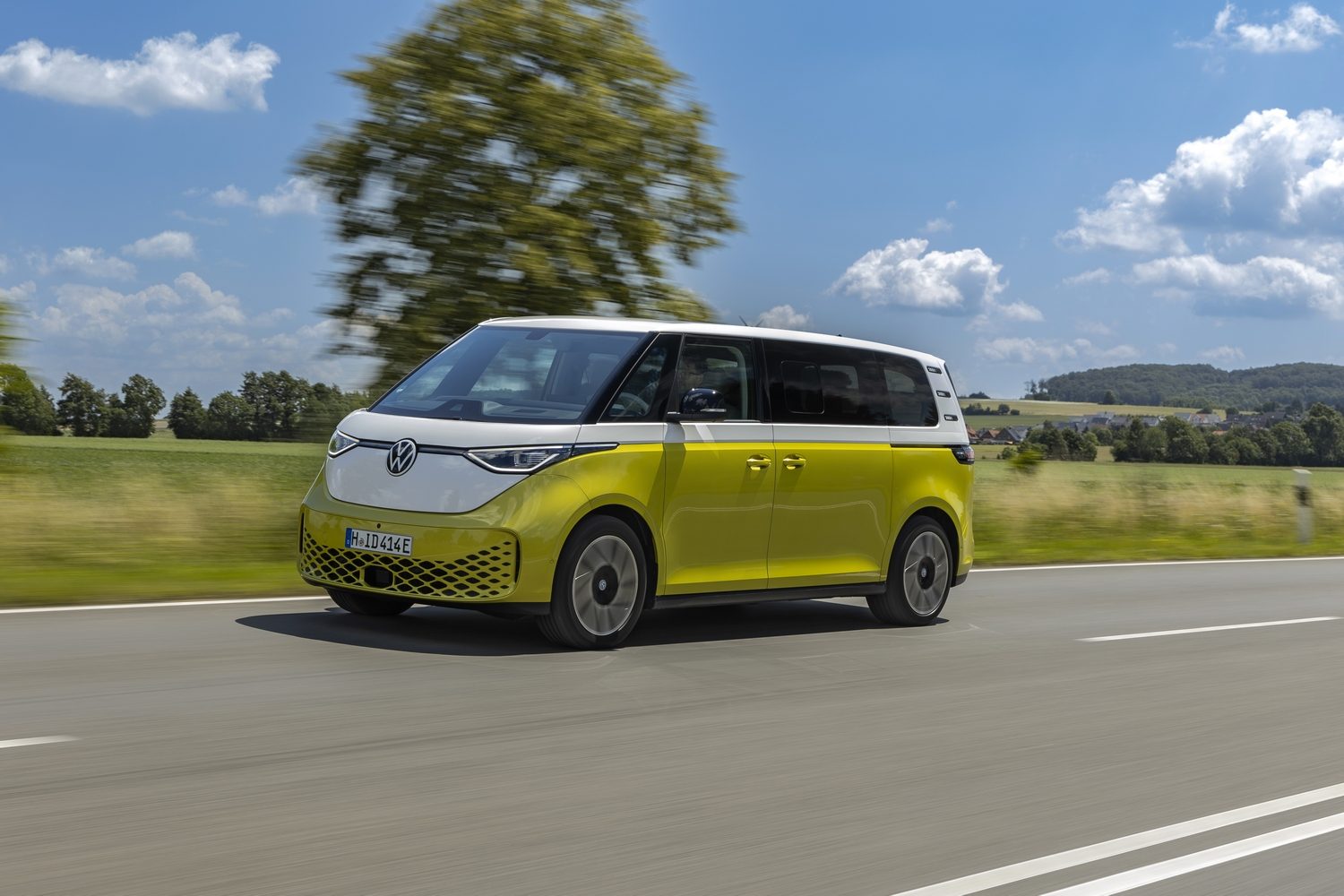
Usefully, the ID. Buzz is equipped with a battery pre-conditioning function when using route guidance. When a charging stop is added to the route, the software will ensure that the battery is at the optimal temperature for drawing down energy as quickly as possible. This can reduce charging time, especially during winter months when the ambient temperature is lower. If route guidance isn’t active, drivers can manually activate pre-conditioning via the infotainment system.
Driving the Volkswagen ID. Buzz LWB
The first thing you notice when driving the Volkswagen ID. Buzz is that it doesn’t drive like a typical ‘van’. It’s much more like a conventional electric SUV in terms of how planted and stable it feels on the road. Much of that can be attributed to its low centre of gravity. The result is that when you go through faster bends, it doesn’t tend to lean in the way you might expect. Its suspension does a thoroughly excellent job of soaking up the bigger bumps, and it feels well-damped, so once it absorbs that initial bump, it doesn’t become unsettled afterwards.
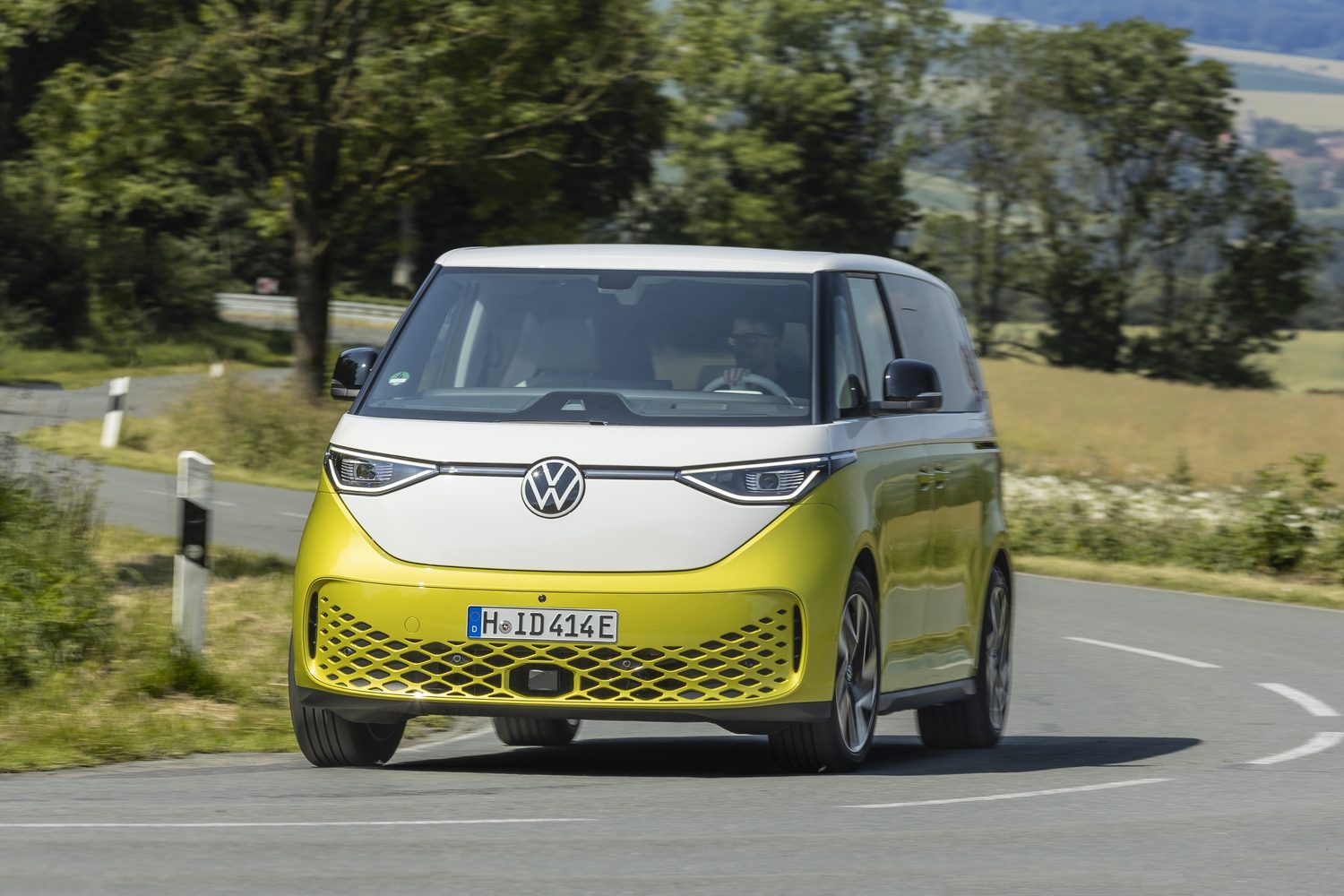
The uprated electric motor and its rear-wheel-drive setup mean that the faster acceleration is noticeable and, as it comes from behind, it adds to the car’s positive handling and steering. Peak outputs climb to 286hp and 560Nm, and it’s the latter that is the more impressive gain as it gives the ID. Buzz a stronger surge of performance whenever you roll your foot onto the accelerator. That’s great if you need to perform a quick overtake or simply have a full complement of passengers onboard.
Not only is the new motor (known internally as the APP550) more powerful, but it is also more efficient, thanks to a complete overhaul of its internal design. The details of that won’t matter much to the average driver, but the improvements in energy consumption figures will make a difference throughout ownership of the vehicle.
A strong level of energy recuperation is available in the ID. Buzz, especially when you toggle the drive selector into the B mode. In this setting, you only need to begin lifting off the accelerator for a noticeable level of deceleration to occur. Using this setting in city and urban settings delivers a one-pedal driving feel that some EV owners enjoy. In contrast, in the D mode, it will automatically coast freely when the accelerator is released.
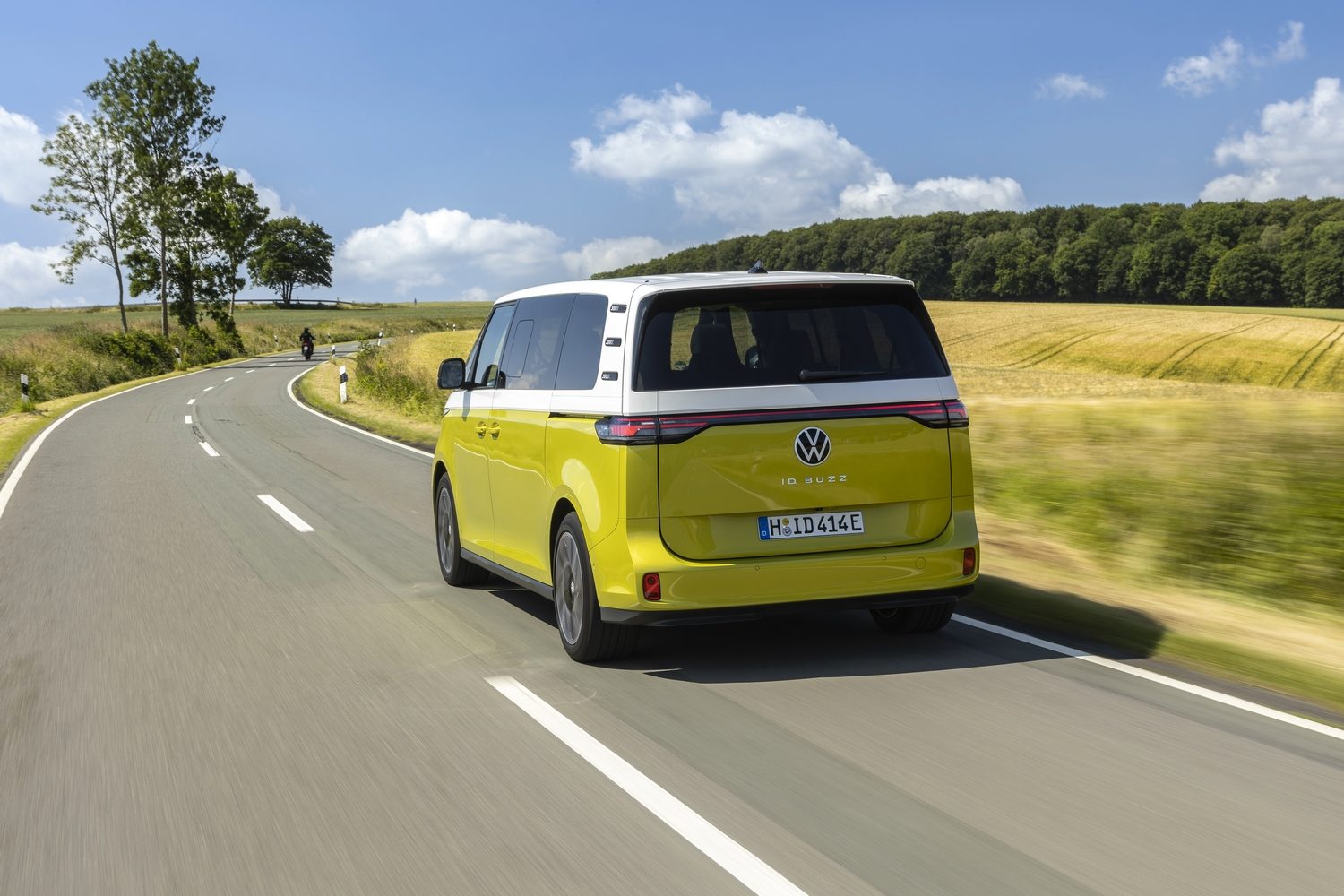
One of the nice features of the ID. Buzz is the driving position and the view of the road that it provides. Unlike the Volkswagen Samba vans of the 1960s that inspired the ID. Buzz’s design, you sit further back from the windscreen than you may expect. Still, that windscreen is vast and the additional front side windows help to greatly reduce the potential for any blind spots when pulling out of junctions.
How many child seats can I fit in the Volkswagen ID. Buzz LWB?
A big benefit of the third row of two seats is that both contain ISOFIX points, adding to the two already available in the outer seats of the middle row. That bench seat in the middle is relatively wide, though you may struggle to squeeze a booster seat in between two child seats depending on how bulky it is. It’s a little surprising that the front passenger seat isn’t equipped with an ISOFIX mounting point, too.
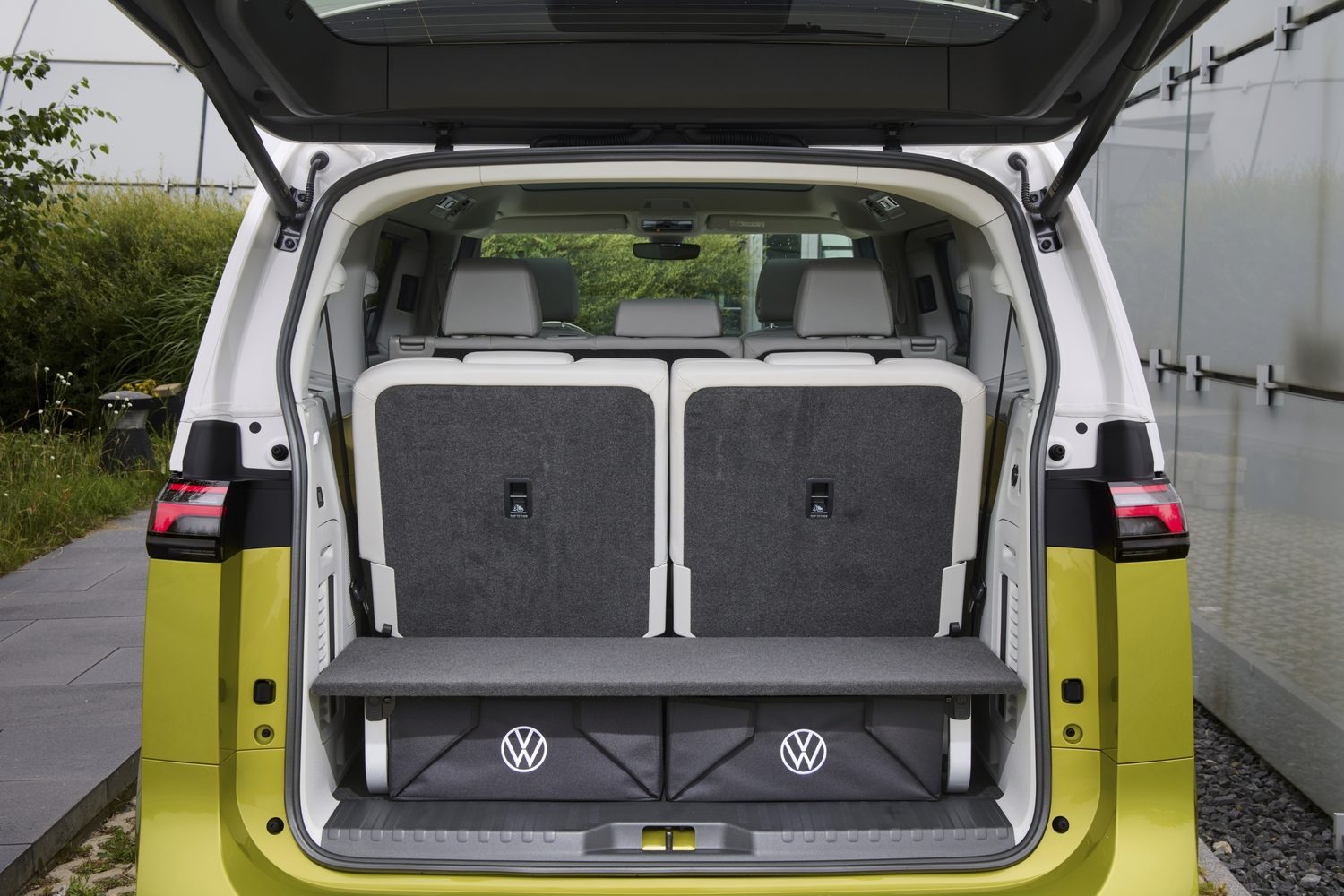
The Volkswagen ID. Buzz LWB’s onboard technology
We’ve already mentioned that the ID. Buzz LWB now gets a larger touchscreen display, but what’s arguably more important is that the native infotainment system has been overhauled. Not only is it now more intuitive to use, but it seems to react much more quickly to inputs. Volkswagen has also worked to improve the built-in voice-operated digital assistant. It is summoned by saying “Hey IDA” and now responds more accurately to requests made in a more natural tone of voice.
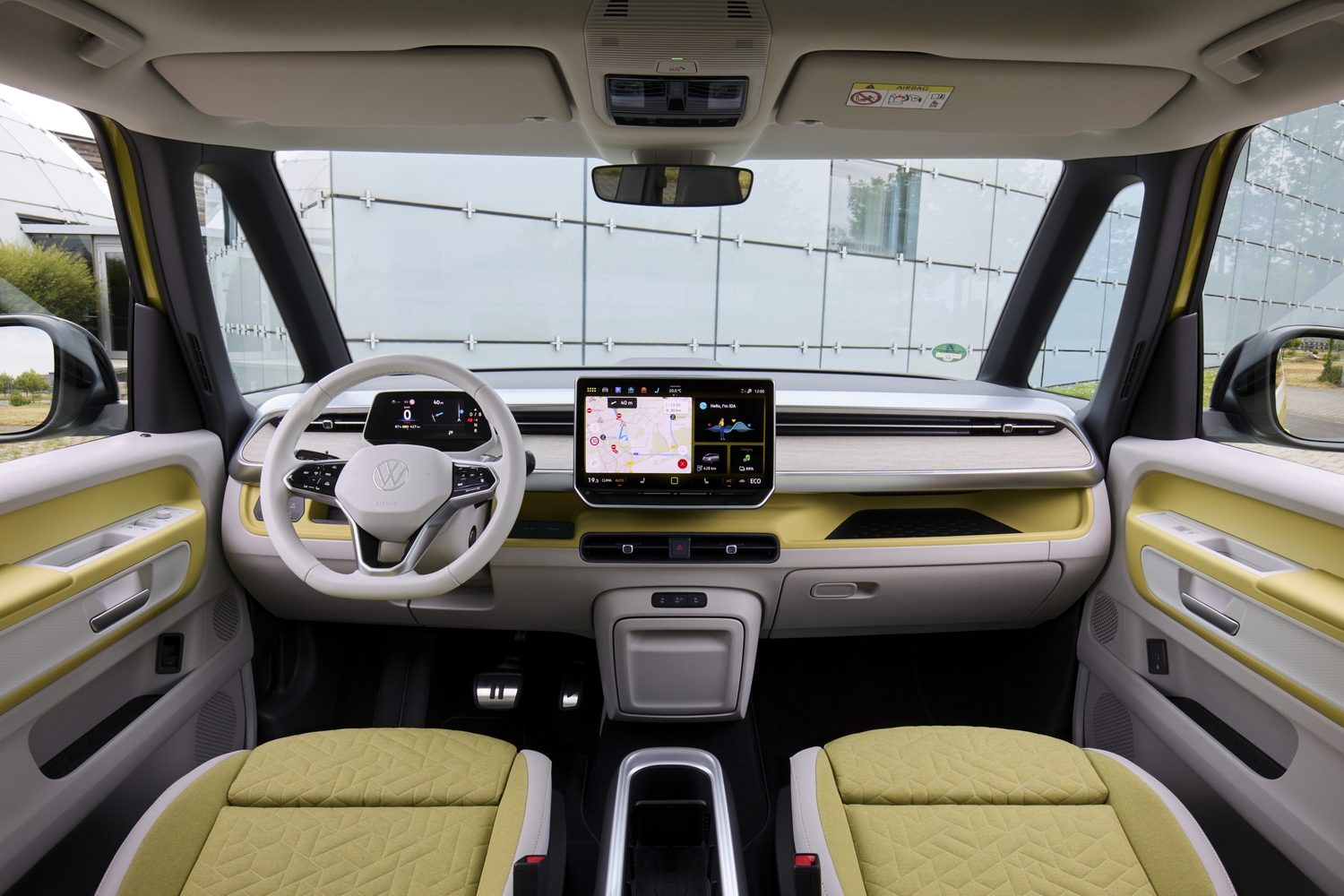
Thanks to the integration of ChatGPT, it can answer more elaborate questions, but only when the onboard system cannot find a suitable answer. Within milliseconds, it contacts ChatGPT through ‘the cloud’ with the request. The questions and answers are deleted immediately afterwards to comply with data protection laws. Another new feature as part of the updated ID. Buzz is the introduction of a head-up display for the driver.
There is some smart technology in the panoramic glass roof, too. It can switch instantly between opaque and almost clear. When it’s ‘open’, the glass has a slightly milky appearance due to the PDLC (Polymer Dispersed Liquid Crystal) layer that is integrated into it. A voltage is applied to the crystals when the roof is ‘open’. When the crystals are de-energised, their arrangement creates an opaque surface layer. The glass is also coated with a coating to reflect high-energy infrared radiation from sunlight to reduce the build-up of heat in the car during hot weather. When the weather is colder, the glass reflects heat radiation inwards to maintain a milder cabin temperature.
The reasons you’d buy a Volkswagen ID. Buzz LWB
One of the most appealing aspects of the Volkswagen ID. Buzz LWB is its design. It stands out from the crowd with its retro looks and simply oozes charm, ensuring it’s a crowd favourite wherever it goes. With the arrival of the long wheelbase version, it can now carry up to seven people and still have some room for luggage left over. Even within the realm of MPVs, no other model on the market has the same broad appeal, and its looks make it far less polarising than the countless number of SUVs on the roads. This is a car to buy as much with your heart as with your head.
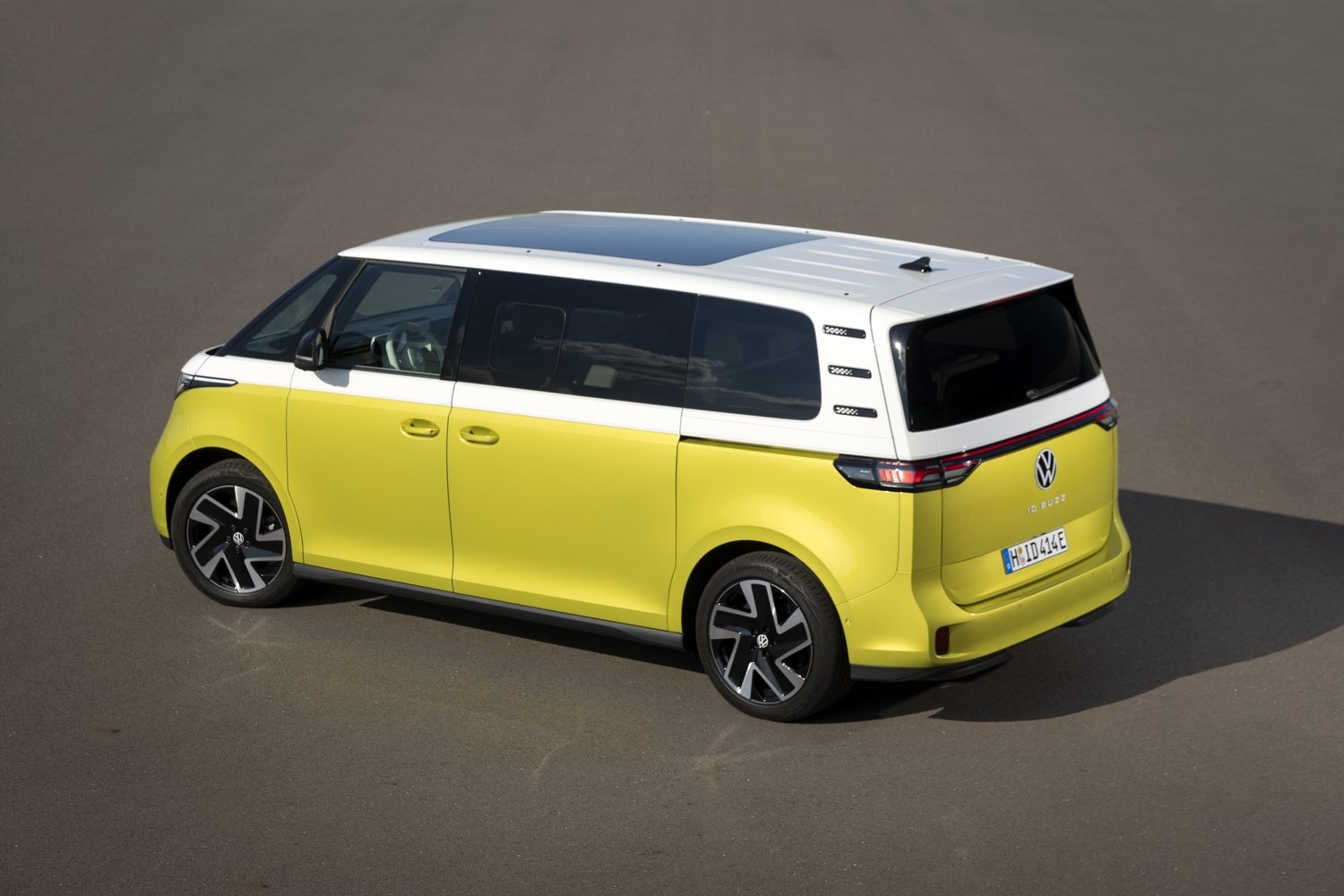
How much is the Volkswagen ID. Buzz LWB in Ireland?
Volkswagen hasn’t yet announced Irish pricing for either the normal or long-wheelbase versions of the 2025 ID. Buzz, though given the updates to the battery, electric motors and onboard technology, it is likely to come in for a price increase. At the time of writing, the Volkswagen ID. Buzz has a retail price in Ireland of €46,495 inclusive of government incentives.
Ask us anything about the Volkswagen ID. Buzz LWB
If there’s anything about the Volkswagen ID. Buzz LWB we haven’t covered, or if you’d like advice on choosing between it and other cars, you can access our (completely free) expert advice service via the Ask Us Anything page. You can also read our review of the normal-wheelbase Volkswagen ID. Buzz here.

